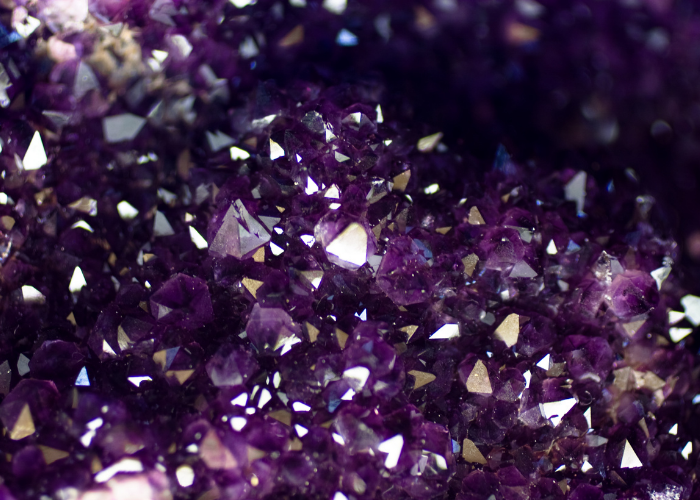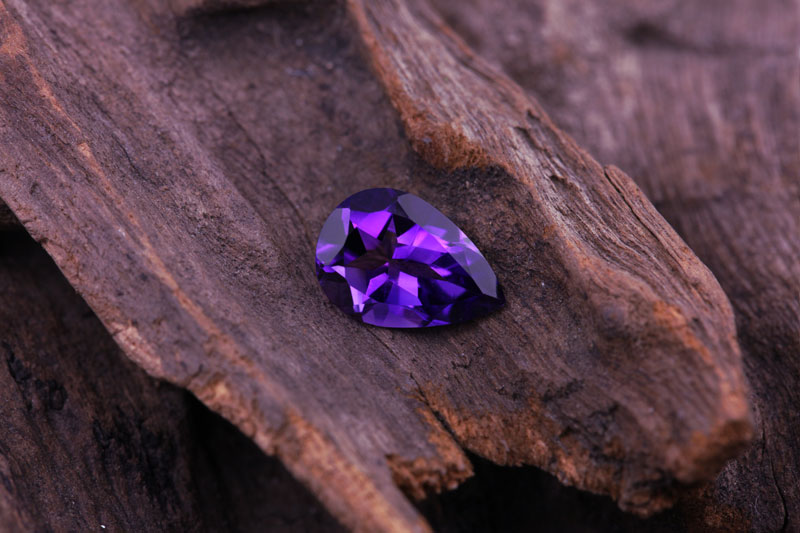
We are here to talk about the amethyst, which, let’s be absolutely honest with ourselves, occupies a genuinely unique space in the whole gemstone ecosystem. It is a quartz—a prominent macrocrystalline quartz, yes—but its accessibility, its sheer volume in the marketplace, fundamentally alters the acquisition strategy compared to, say, a sapphire or a diamond. The stone’s distinctive violet coloration, that gorgeous purple—which we know, of course, comes from iron irradiation within the crystal structure, it’s a geological inevitability—confers upon it an immediate, undeniable aesthetic power, you see. Historically, it was royalty, it was sobriety, it was power; the symbolism is massive.
Now, while the commercial availability of amethyst does mean that it simply cannot compete on the same per-carat financial scale as the “Big Four,” its aesthetic and design value is, I would argue, unequivocally high. For the serious buyer—and I mean serious, whether you are stocking inventory, or perhaps selecting a showcase piece for a high-net-worth client—the analysis must be rigorously focused. We are looking for factors that truly dictate the stone’s final disposition and its worth. Frankly, successfully navigating this particular market requires a meticulous application of quantified standards, primarily across Color, Clarity, Cut, and Treatment Disclosure. This detailed brief, which I’ve put together, attempts to lay out that necessary framework for objective assessment.
I. Color Assessment: The Unequivocal and Primary Value Determinant. Period.
We begin here, and let me be perfectly clear: color is everything. It is the overwhelming, I mean overwhelming, factor governing the financial and aesthetic standing of an amethyst. This necessitates a sophisticated, almost philosophical evaluation of the trio of characteristics: Hue, Tone, and Saturation. You have to consider all three simultaneously.
A. Saturation and Hue Purity—The Deep Siberian Standard
- The Optimal Standard: The highest premium is unequivocally assigned to stones that achieve that rich, intense, medium-dark violet. This is the Deep Siberian standard, the benchmark. It’s critical, this depth of color; stones that are too pale simply lack character, they look washed out, and they suffer in every lighting condition. The truly superior specimens must also, and this is important, exhibit a subtle, secondary reddish-purple flash—a characteristic that actually enhances the stone’s perceived liquidity and vibrancy. It’s the red modifier that truly elevates it.
- Tone Extremes and Their Risk: Tone, which is the lightness or darkness of the color, must be carefully managed. The ideal zone is the medium to medium-dark range. Overly light tones lead to instant devaluation. Conversely—and this is a very common issue—excessively dark tones often cause catastrophic light extinction, where the stone appears black and lifeless indoors. You must avoid these extremes; the sweet spot is quite narrow, really.
- Contaminants: The intrusion of any brownish, grayish, or muddy secondary hues will destroy the stone’s value. I cannot stress this enough. This is not simply an aesthetic preference; it compromises the required brilliance and is a clear indicator of low-tier rough material.
B. Color Zoning and The Cutter’s Challenge
- Zoning Protocol: Amethyst is inherently prone to color zoning—that annoying uneven distribution of color. A professional quality stone must demonstrate uniform saturation. To detect this, you place the stone face-down on a white background—it’s the standard test. Severe zoning simply destabilizes the visual integrity and drops the value quickly.
- Light Stability Requirement: A critical, often overlooked requirement is color stability. The sapphire market deals with this, but amethyst is vulnerable too. The stone’s saturation must hold firm across diverse lighting, including strong daylight equivalent and standard interior lighting. If the color washes out or appears pale under direct light, it’s commercially unstable and unsuitable for serious work.
II. Clarity Standards: Why Flaws are Unacceptable Here
This is where the rules change completely. Unlike rubies or emeralds, where some inclusions are tolerated or even valued, the standard for amethyst clarity is stringent. Why? Because gem-quality rough is abundant.
- The Eye-Clean Threshold: The baseline is eye-clean. No exceptions for commercial work. Any visible cloudiness, fractures, veils, or internal flaws render the specimen substandard. If you can see it without magnification, it’s a poor acquisition. Simple.
- Transparency and Light: The stone must be exceptionally transparent to allow light transmission. You’re buying color, and any haze will dull that color. We can be picky here because we can be picky here; the material allows it.

III. Cut, Proportions, and The Focus on Scale
The cut is primarily an exercise in color optimization and weight retention.
- Optimal Orientation: The cutter’s art lies in orienting the table exactly perpendicular to the c-axis of the crystal, as this is where the deepest color concentration often resides. Correct orientation is absolutely vital for presenting the stone’s best face.
- Avoiding Extinction: You must check for poor proportions. An overly shallow pavilion—the lower part of the stone—will cause light extinction. This creates a large, dark, lifeless area right in the center, ruining the stone’s aesthetic impact. Good cutting avoids this fundamental flaw.
- Scalability: Amethyst is uniquely scalable. It is readily available in large deposits, meaning the price increase is linear, not exponential, across weight classes. This is why it’s the go-to stone for high-impact pieces; you can procure a magnificent, large specimen without the crippling financial outlay associated with the other gems.
IV. Treatment Status and Market Acceptance: The Bottom Line
Transparency is mandatory, yes, but the treatment itself is entirely accepted.
- Standard Heating Protocols: The overwhelming majority—we are talking over 90%—of commercial amethyst has been subjected to standard thermal enhancement. This process is permanent, stable, and universally accepted. Its purpose is strictly to improve the inherent violet saturation and eliminate any residual brownish or muddy overtones. The value is assessed based on the result, not the procedure.
- The Untreated Niche: Only material that achieves the Deep Siberian standard naturally is designated ‘untreated.’ Such stones are rare and may command a slight premium, but for volume purchasing, the consistency and quality of properly heated material is almost always preferred.
- Derivatives: Remember that the same heating process applied to pale rough will produce Citrine. It’s all connected, you see.
V. Due Diligence and Quality Metrics
Given the market volume, acquisition risk is less about fraud (though always a concern) and more about misrepresentation of quality.
- Metric Adherence: Focus rigorously on adherence to the Deep Siberian color metric and the eye-clean clarity standard. These are the measurable, verifiable pillars of high-grade amethyst.
- Vendor Integrity: Always secure material from highly reputable suppliers who provide transparent, documented grading. Their reputation is the first and best line of defense against poor acquisition choices.
Acquiring high-quality amethyst is about recognizing scale and value. It requires stringent adherence to color metrics and clarity expectations, maximizing the stone’s unique optical properties. That is how a professional approaches this market.
